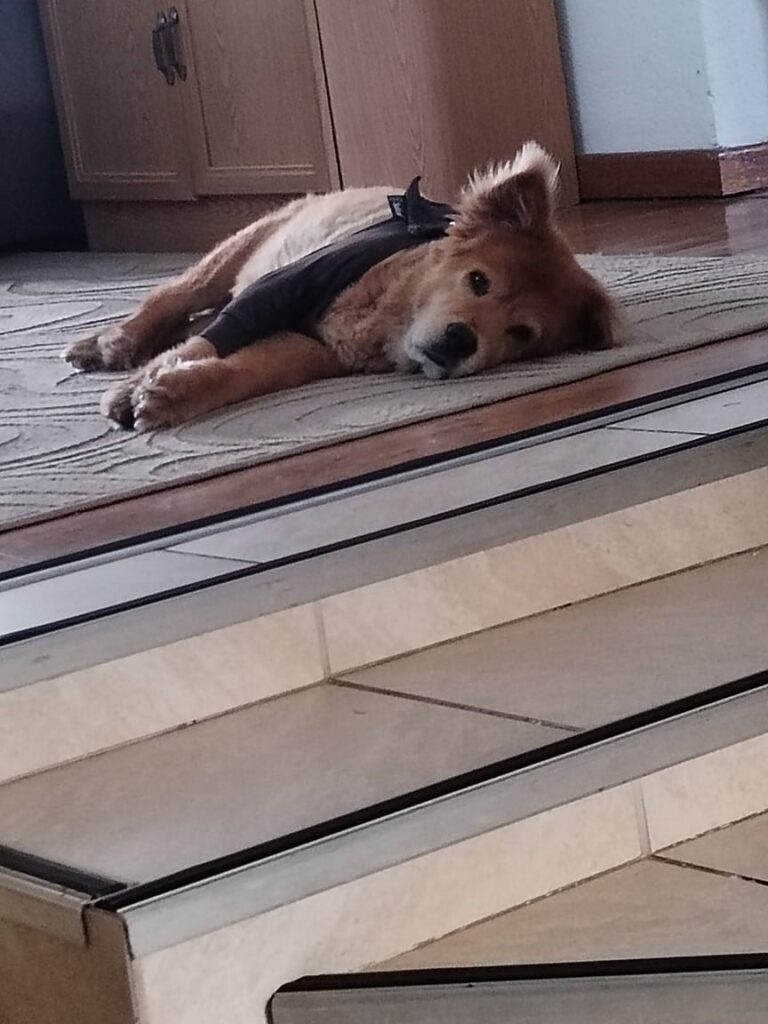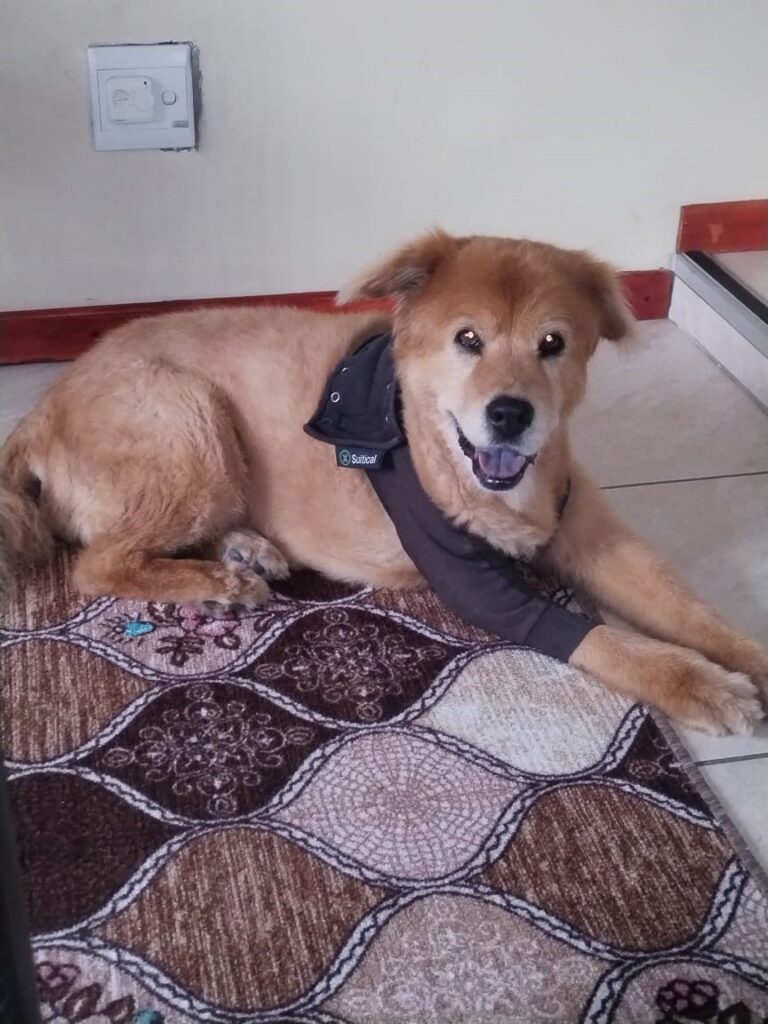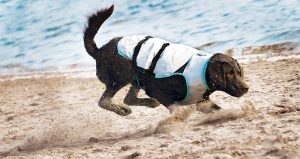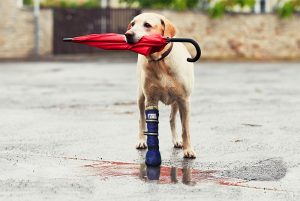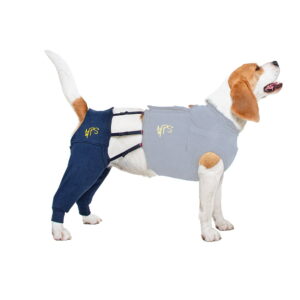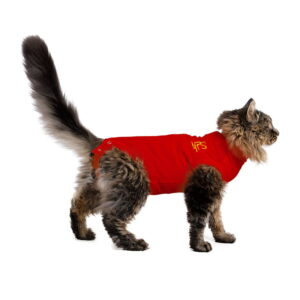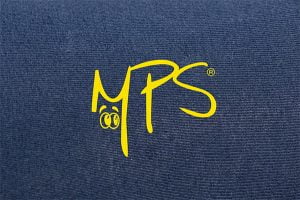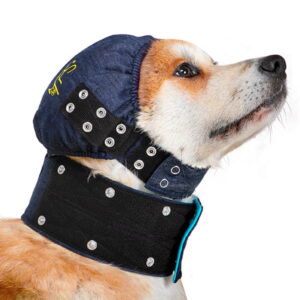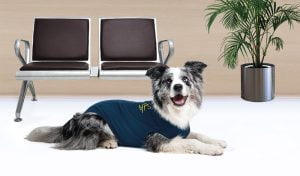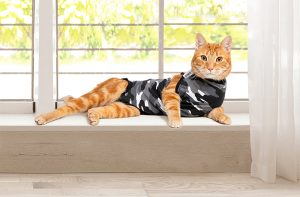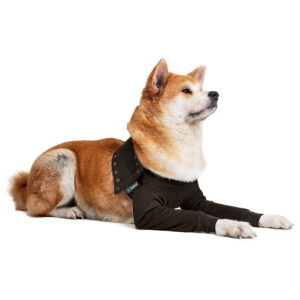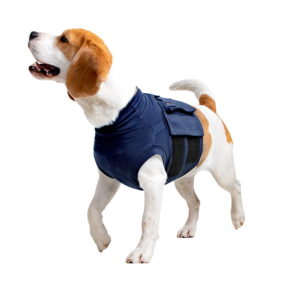Suitical Dog Recovery Sleeve Review: Arthritis Support and Mobility
5‑star customer review
Real owner review of the Suitical Recovery Sleeve for senior dog arthritis and post‑injury support. Learn how gentle warmth and compression can add stability, reduce licking, and help older dogs move with confidence.
Quick benefits at a glance
- Warmth and gentle compression for stiff, arthritic joints
- Stability and confidence during walks or rest
- Reduces licking/chewing of sore spots and old injuries
- Comfortable alternative to a cone for limb protection
- Easy on/off; washable for everyday use
Lucy’s Story: Warmth, Stability, and Confidence
We’re deeply grateful to Juleiga for sharing Lucy’s journey with us. Lucy was a beloved senior Chow Chow living with arthritis and an old injury. In her final months, a simple change made a real difference.
My Lucy passed away at the end of July 2024. Her age, arthritis, and complications from an old injury finally took their toll. However, the Suitical Recovery Sleeve was a wonderful support, helping her stay active—especially with the brace providing gentle stability across her body. Lucy was confident using her leg because the sleeve kept it secure, and it even helped reduce pain by keeping her arthritic leg warm.
We bought another sleeve through Takealot in April 2024, as the sleeve naturally lost some density after several washes. I have two other Chow Chows, and as they’re prone to arthritis, it’s comforting to know that this product offers a way to help manage their pain and support mobility.
Thank you for making such a thoughtful product. It truly helped Lucy a lot in her last months.
5‑star review — Juleiga Maulgue
What changed for Lucy (as reported by her owner)
- More confident weight‑bearing on the affected leg
- Calmer rest on cooler evenings thanks to steady warmth
- Short daily walks felt easier and more comfortable
- Less licking of the sore limb compared with no protection
Why a Recovery Sleeve Helps Arthritis and Old Injuries
- Warmth: Retains gentle heat around the joint, which can ease stiffness in senior dogs.
- Compression: Light, even pressure can provide a reassuring, stabilising feel without the bulk of a rigid brace.
- Protection: Acts as a barrier to stop licking/chewing of joints, hot spots, and old wounds.
- Comfort vs cone: For limb issues, many dogs tolerate a sleeve far better than an Elizabethan collar.
- Versatility: Useful for arthritis management, post‑injury support, lick granuloma, and IV site protection (as advised by your vet).
Always consult your veterinarian, especially if your dog has acute pain, a new injury, or recent surgery.
How to Choose the Right Size (with Chow Chow Fit Tips)
Getting the size right ensures effective compression and comfort.
How to measure
- Girth: Measure the upper part of the leg (near the shoulder or hip) where the sleeve grips.
- Length: Measure from the top of the leg (armpit/groin) down toward the paw for the recommended sleeve length.
- Paw option: Choose front or rear leg, and single or double sleeve as needed.
Chow Chow fit tips
- Dense double coats can add bulk. Prioritise accurate girth measurement over guessing by weight.
- If your dog sits between sizes, choose the size that matches girth most closely; avoid over‑sizing as it may slip.
- Check movement: Your dog should be able to flex the joint freely without pinching or rolling.
- First wears: Monitor for rubbing and adjust the sleeve placement after the first few walks.
- View Size Guide
- dog recovery sleeve size guide for Chow Chows
Care, Washing, and Longevity
Juleiga noted some softening of the fabric after several washes, which is normal for everyday wear. To keep your sleeve performing well:
Care tips
- Close all fasteners before washing.
- Machine wash cold or at 30°C on gentle.
- Do not bleach or use fabric softener.
- Air‑dry flat; avoid tumble drying and direct high heat.
- Rotate between two sleeves if your dog wears one daily.
What to expect
- With regular use, gradual softening can occur over time.
- Replace the sleeve if you notice persistent slippage, thinning that reduces support, or fraying seams.
- Shop a spare sleeve for rotation
Vet Guidance: Sleeve vs Brace
- Sleeve (warmth/compression): Great for mild‑to‑moderate arthritis stiffness, post‑injury reassurance, and to prevent licking or minor abrasion. Often more comfortable for continuous wear at home.
- Brace (structured support): Consider for joint instability (e.g., ligament deficiency) or where targeted immobilisation is prescribed by your vet.
- Cone alternatives: For limb wounds or hot spots, a recovery sleeve can protect the area without restricting head movement like a cone.
- Post‑surgery: Always follow your vet’s timing and wear‑time instructions.
If your dog shows increased limping, swelling, or skin irritation, remove the sleeve and consult your veterinarian.
FAQs
Q: Does a recovery sleeve help with canine arthritis pain?
A: Many senior dogs benefit from the warmth and light compression of a sleeve, which can help reduce stiffness and discourage licking. It’s not a cure, but it can be a helpful part of a broader arthritis plan alongside vet‑advised meds, controlled exercise, and weight management.
Q: How long can my dog wear the Suitical sleeve each day?
A: Most dogs can wear it for extended daytime use. Check the skin daily, give breaks, and follow your vet’s guidance—especially after surgery or with sensitive skin.
Q: Sleeve or brace for arthritis?
A: For general warmth, comfort, and light stability, start with a sleeve. If instability or significant pain persists, ask your vet whether a structured brace is appropriate.
Q: How do I measure my Chow Chow correctly?
A: Measure girth high on the leg and the length from armpit to paw. Because of dense coats, fit to girth rather than weight alone and check for secure but comfortable compression.
Q: How do I wash the sleeve and how long will it last?
A: Close fasteners, wash cold/gentle, and air‑dry. Longevity depends on frequency of use and care; expect normal softening over time. Replace when fit or function is compromised.
Helpful how‑to
- Fit check: The sleeve should sit snugly at the top of the leg without rolling or pinching.
- Activity: Start with short, calm walks and observe your dog’s movement.
- After care: Brush out the coat and let the skin breathe between long wear sessions.
—
We’re honoured to share Lucy’s story, and we hope it helps you decide whether a recovery sleeve could bring gentle comfort and confidence back to your senior dog’s stride. If you need sizing help, reach out—our team is happy to advise.”
